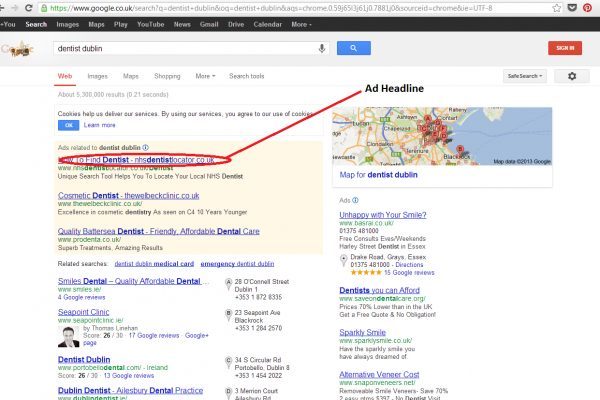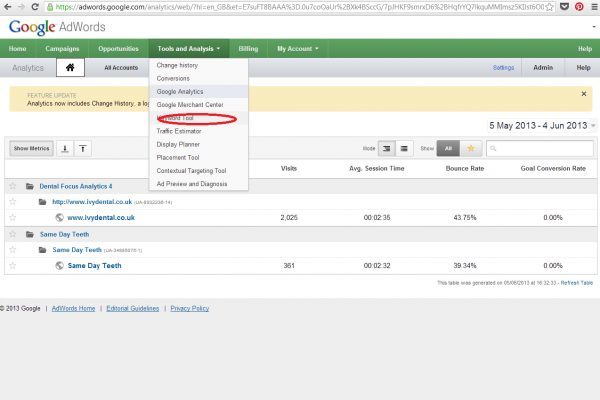 Confused about what Google Adwords can offer you? Chris Baker provides the answer.
Confused about what Google Adwords can offer you? Chris Baker provides the answer.
Like it or not, Google is increasingly important in all of our lives – Google is now very much, ‘the man’.
Pay-per-click (PPC) is a service that Google Adwords can offer businesses. It is quite complex as it can do so much. Let’s look at the basics.
Keyword(s)

The keyword, for which you wish to be found, has to appear in the ad headline. The ad headline is as shown in Figure 1. By matching the keyword for which you wish to be found and the ad headline, Google sees you as more relevant.
You cannot run just one or two ads for the entire range of services that you offer. You should be running multiple ad groups – 20-30 would not be unusual for a dental practice. Just think about all the terms that you may want to be found for: ‘dentist London, ‘dental practice Nottingham’, ‘orthodontics Edinburgh’, ‘Six Month Smiles Cardiff’ – they soon mount up.
To find out what keywords will work for you, a good (and free) place to start would be Google’s own keyword tool (Figure 2). This will give you an idea of the traffic that you can expect and what it is likely to cost you.
Quality score

Google has almost gone out of its way to conceal this from advertisers. Quality Score is the estimate that Google puts on how relevant your ads, keywords and landing page are to a person seeing your ad. Having a high Quality Score means that Google thinks your ad, keyword and landing page are all relevant and useful to someone looking at your ad. It calculates this through a number of areas including past click through rate (CTR), relevance and geographic performance.
What does that mean?
- The higher the quality score, the less you pay cost-per-click (CPC). Yes you read that correctly
- Higher quality scores lead to lower first page bid estimates
- Higher quality scores lead to lower top of page estimates
- Higher quality scores mean higher ad positions.
The score is based out of 10 where five can be considered ‘par’ so anything above this is good – anything lower has to be reconsidered as you are paying more than you should or need to be.
How can I improve my quality score?
Very simple – improve the relevance of your keyword and ad and therefore improve the CTR.
Top three or nowhere

The advertisement must appear in the top three. Over 90% of all PPC clicked on traffic is one of the three advertisements at the top of the page. If you are out of the top three then you are wasting your money.
How do I know if I will appear in the top three?
Quite simple – when you go into your campaign you will see the normal campaign home screen. And, if you click on the ‘Keywords’ tab you will see the average position column on the right-hand side (Figure 3). If the average position is 0-2.9, it’s okay, three and above is nowhere.
If you cannot afford to appear in the top three you have two options:
- Rethink your keywords
- Rethink your marketing and move away from PPC.
If you have any comments or suggestions for future Dummies’ Guides, please get in touch with [email protected]. For more information on this story please call Corona Design and Communication on 0845 370 2211 or 07947 470896.


